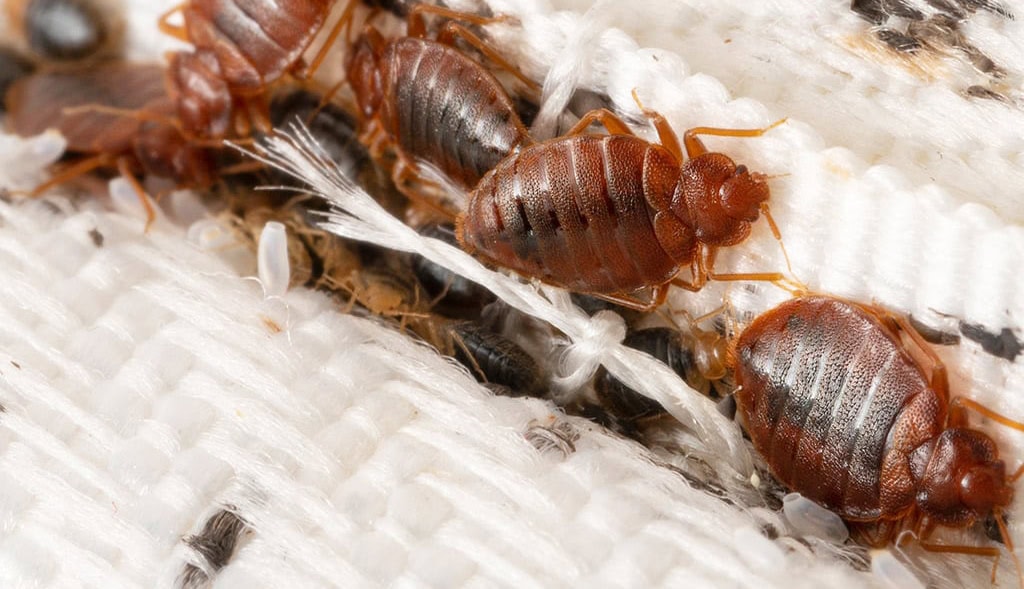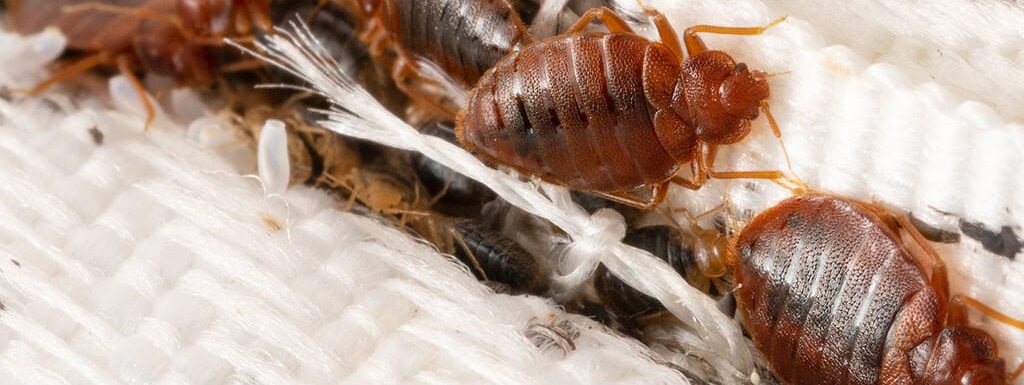The bed is often considered a personal sanctuary—a space for rest, comfort, and moments of vulnerability. It’s where we relax after long days and find solace in quiet moments.
But this refuge can quickly lose its peace when bed bugs invade, turning restful nights into restless ones. Professional bed bug extermination services are often the most effective way to address these pests and restore comfort. In this article, we’ll cover what bed bugs are, what attracts them, and how to eliminate them effectively.

What Are Bed Bugs?
Bed bugs have existed since ancient times, with evidence tracing them back to ancient Egypt. They were introduced to the U.S. by colonists and thrived for several decades. However, their population declined significantly in the 1950s due to advancements in pest control products. Bed bugs are highly attracted to humans and often gather in densely populated areas. Infestations commonly occur due to increased travel, changes in pest control practices, or their growing resistance to pesticides.
Understanding why bed bugs suddenly infest a room is crucial to managing their presence. These small, reddish-brown pests can survive up to a year without food and are adept at hitching rides on personal belongings. Once inside, they seek out cozy places like beds, clothing, or furniture to inhabit and reproduce.
The Different Causes for Bed Bugs
Environmental Factors
A. Clutter and Overcrowding
Bed bugs thrive in environments with plenty of hiding spots and easy access to hosts for feeding. Clutter offers numerous places for bed bugs to conceal themselves during the day, making detection and eradication more difficult.
Overcrowded living spaces, such as apartments with multiple occupants or dormitories with shared rooms, increase the likelihood of infestations by providing a higher concentration of potential hosts. Clutter and overcrowding also hinder thorough cleaning and inspection, allowing bed bugs to multiply unnoticed.
B. Warm and Humid Conditions
Warm and humid conditions create an ideal habitat for bed bugs to thrive and reproduce. These pests prefer temperatures between 70°F and 80°F (21°C to 27°C) and humidity levels of 70% to 80%. Bed bugs can develop rapidly from egg to adult in such environments, leading to faster population growth.
Furthermore, high humidity helps bed bugs remain hydrated, reducing their dependence on regular blood meals and increasing their chances of survival when hosts are unavailable.
C. Presence of Hiding Spots
Hiding spots are crucial for bed bugs to evade detection and ensure their survival. Bed bugs are nocturnal insects that spend most of their time hidden away in cracks, crevices, and other unexpected areas near their hosts. Common hiding spots include seams, headboards, bed frames, furniture joints, and baseboards. These pests are adept at squeezing into tight spaces, making locating and eliminating them challenging.
Travel and Migration
A. Movement of Infested Items
The movement of infested items significantly contributes to the spread of bed bugs. These pests are expert hitchhikers and can easily latch onto belongings such as clothing, bedding, luggage, and furniture.
When infested items are moved from one location to another—during a move, vacation, or even borrowing items from friends or family—bed bugs can easily hitch a ride. This unintentional transportation allows them to spread infestations to new environments. Over time, this process has facilitated their dispersal across cities, countries, and even continents, contributing to the global prevalence of bed bug infestations.
B. Spread Through Luggage and Furniture
Bed bugs often spread through luggage and furniture, particularly in settings where people travel frequently, such as hotels, motels, and hostels. When travellers stay in accommodations with bed bug infestations, these pests can crawl into suitcases, backpacks, and other personal belongings.
Travellers can unknowingly introduce bed bugs to their living spaces, allowing the infestation to take hold. Similarly, secondhand furniture, especially from sources that haven’t been properly inspected or sanitized, can harbour bed bugs and serve as vehicles for their spread when brought into new homes.
C. Infestation in Public Spaces
Bed bugs can also infest public spaces, including transportation vehicles, movie theatres, offices, libraries, and retail establishments. These environments present ample opportunities for bed bugs to come in contact with humans and their belongings.
Infestations in public spaces may originate from infested individuals unknowingly carrying bed bugs on their person or from their own items. Once they’re established in public settings, bed bugs can easily transfer to unsuspecting individuals and their belongings. Awareness of the risks associated with travel-related bed bug transmission is essential for implementing preventive measures and minimizing the spread of infestations.
Human Behaviour
A. Lack of Awareness
One of the contributing factors to the proliferation of bed bugs is the lack of awareness among the general population. Several people are unaware of the signs of a bed bug infestation or how easily these pests can be introduced into their homes. Without the right knowledge, individuals may fail to recognize the early indicators of a bed bug problem, such as small, reddish-brown stains on the bedding or clusters of small, red, itchy welts on exposed areas of the skin, often appearing in lines or groups.
B. Inadequate Sanitation Practices
Inadequate sanitation practices can increase the likelihood of bed bug infestations. Clutter, dirt, and debris create ideal hiding spots where bed bugs can thrive and reproduce. Failing to regularly clean and declutter living spaces allows these pests to evade detection.
Additionally, improper storage of belongings—such as leaving clothes on the floor or neglecting to clean bedding regularly—provides opportunities for bed bugs to spread and establish new hiding places. Poor sanitation creates conditions that allow bed bug infestations to persist and become more difficult to manage.
C. High Turnover in Residential Areas
High turnover rates in apartment buildings or rental properties can contribute to the spread of bed bugs. Frequent tenant changes may lead to rushed or overlooked pest prevention measures, increasing the risk of infestations. New tenants relocating from previously infested areas may also unknowingly transport bed bugs to their new place of residence.
Economic Factors
A. Increased Global Travel
For avid travelers, international trips can unfortunately lead to sudden bed bug infestations. During global journeys, bed bugs from foreign locations can latch onto luggage, clothing, or personal belongings, as they are expert hitchhikers. They can easily infest accommodations, from hotels to hostels, and travel back home with unsuspecting tourists. Close proximity to others on flights also provides opportunities for bed bugs to spread from one person to another.
B. Resistance to Pesticides
Ever since pesticides were created, bed bugs have developed a remarkable resistance to many commonly used insecticides. This resistance stems from both the overuse and misuse of these chemicals, as well as the genetic adaptability of bed bugs. As a result, traditional insecticides can sometimes prove ineffective in controlling infestations.
To address this challenge, pest control professionals now rely on integrated pest management techniques, including heat treatments, vacuuming, and steam cleaning, to achieve more effective long-term results.
C. Challenges in Eradication
Economic constraints often prevent residents from seeking timely professional treatment, allowing bed bug infestations to escalate over time. Extermination services typically range from $300 to $8,000, depending on the type of treatment and property size, which can be prohibitively expensive for many households.
For low-income families, this cost may lead to reliance on ineffective DIY methods or enduring the presence of bed bugs. This, in turn, perpetuates the infestation cycle and contributes to the spread of bed bugs in communities with limited resources.
Reclaim Your Space Today
At Bed Bug Exterminator Pro, we understand the challenges bed bug infestations present and are committed to providing effective, affordable solutions. Our licensed and insured team employs safe, environmentally friendly methods to eliminate bed bugs from your home or business.
We offer a 100% satisfaction guarantee and a price-match promise to ensure you receive the best service at the lowest cost. Don’t let bed bugs disrupt your life—contact us today for a free estimate and take the first step toward a bed bug-free environment.



